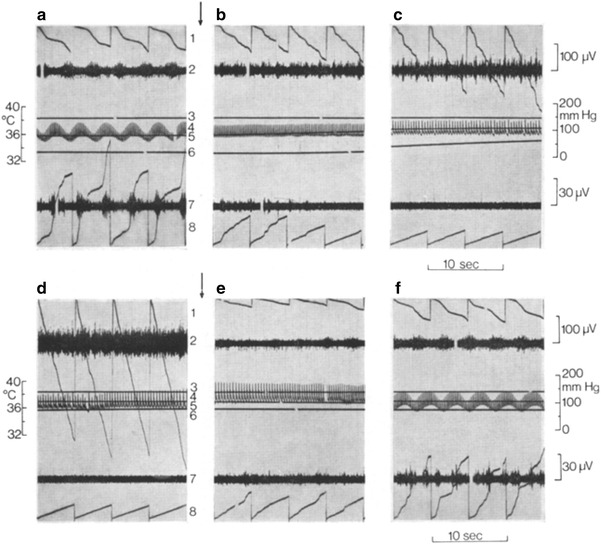Fig. 5.

Regionally antagonistic changes of sympathetic activity induced in an anesthetized artificially ventilated rabbit under neuromuscular blockade by respiration pump arrest for 2 min (asphyxia, start and end indicated by arrows). Sections from original recordings of multi-fiber discharges in a filament of a splanchnic nerve branch (upper two traces) and of a sympathetic branch to the ear skin (lower two traces) before (a), at different times during 2 min of asphyxia (b 20–40 s, c 40–60 s, d 100–120 s), and after restarting the respiratory pump (e 10–20 s, f 160–180 s later). Traces numbered in a and d: 1 analog integration in 5 s intervals (downward deflections) of splanchnic sympathetic activity; 2 original trace of splanchnic activity; 3 core temperature; 4 arterial pressure; 5, 6 skin temperatures of right and left ear; 7 original trace of cutaneous sympathetic activity; 8 its analog integration in 5 s intervals (upward deflection). Almost total suppression of cutaneous sympathetic activity during asphyxia results in rises of ear skin temperatures. From Iriki et al. [31]
